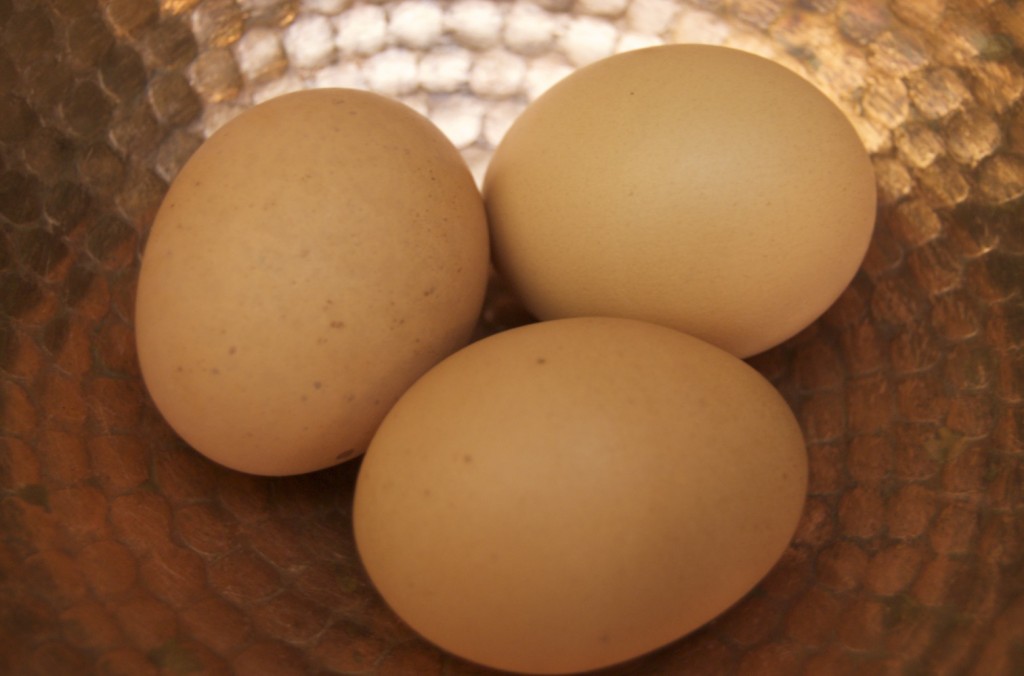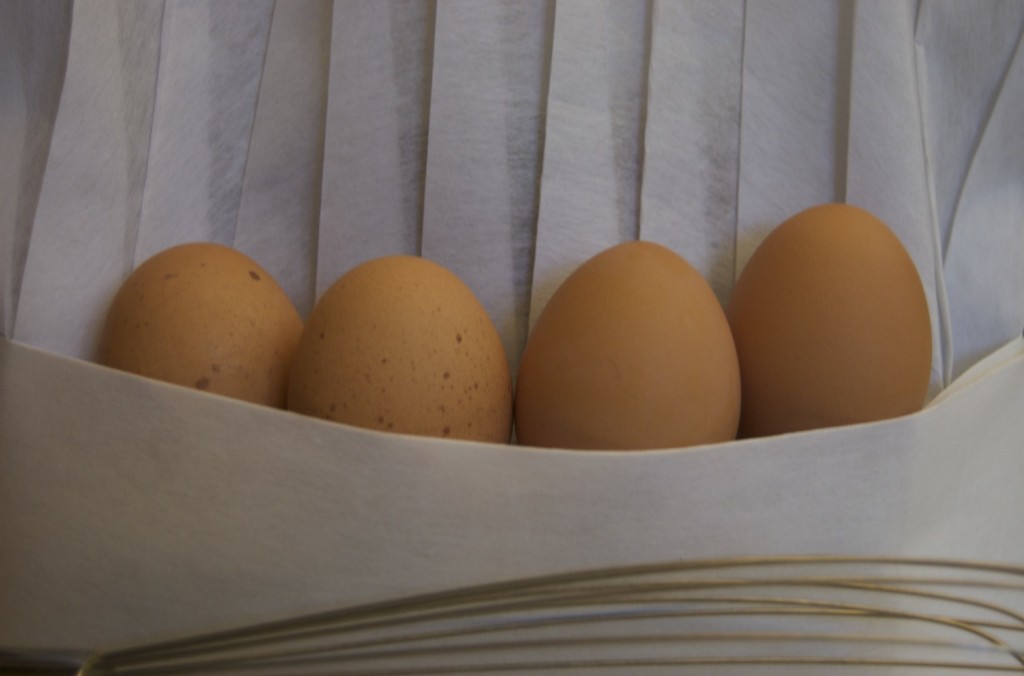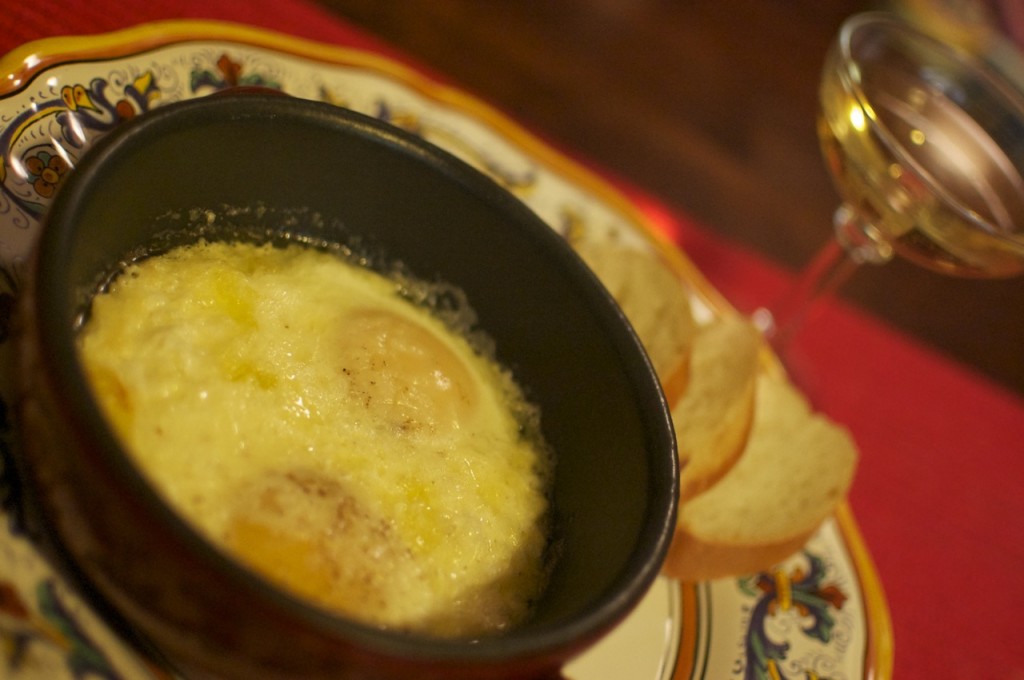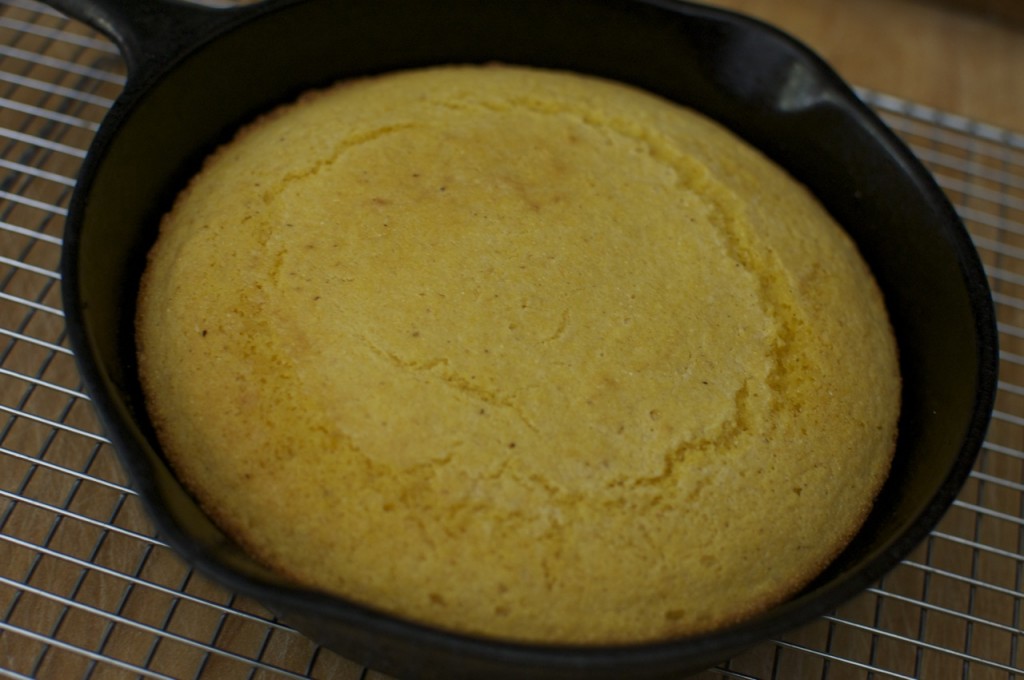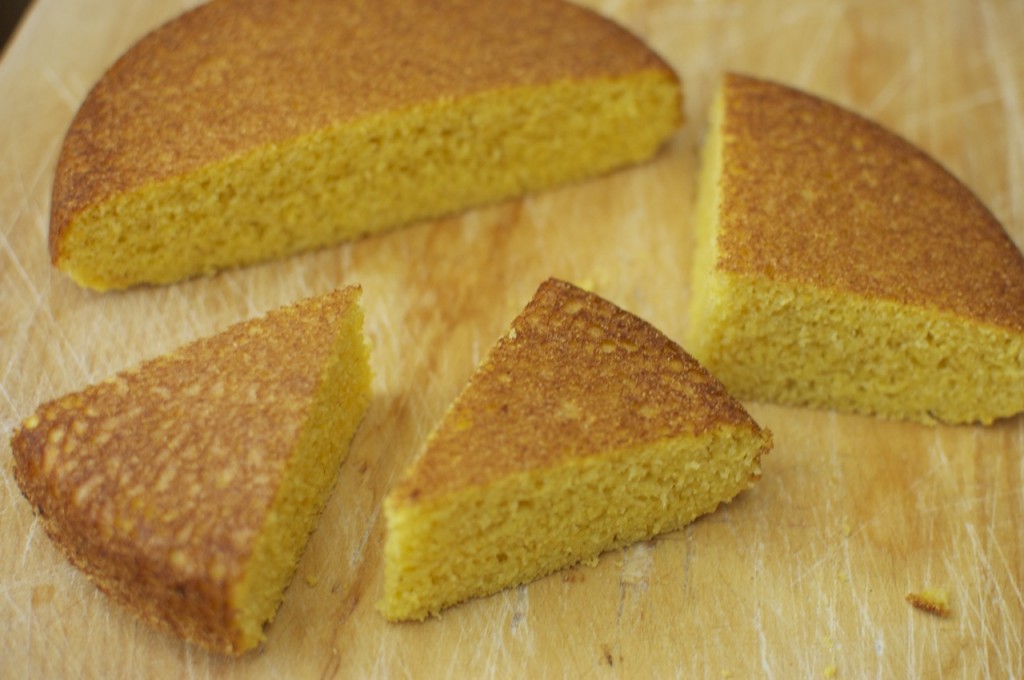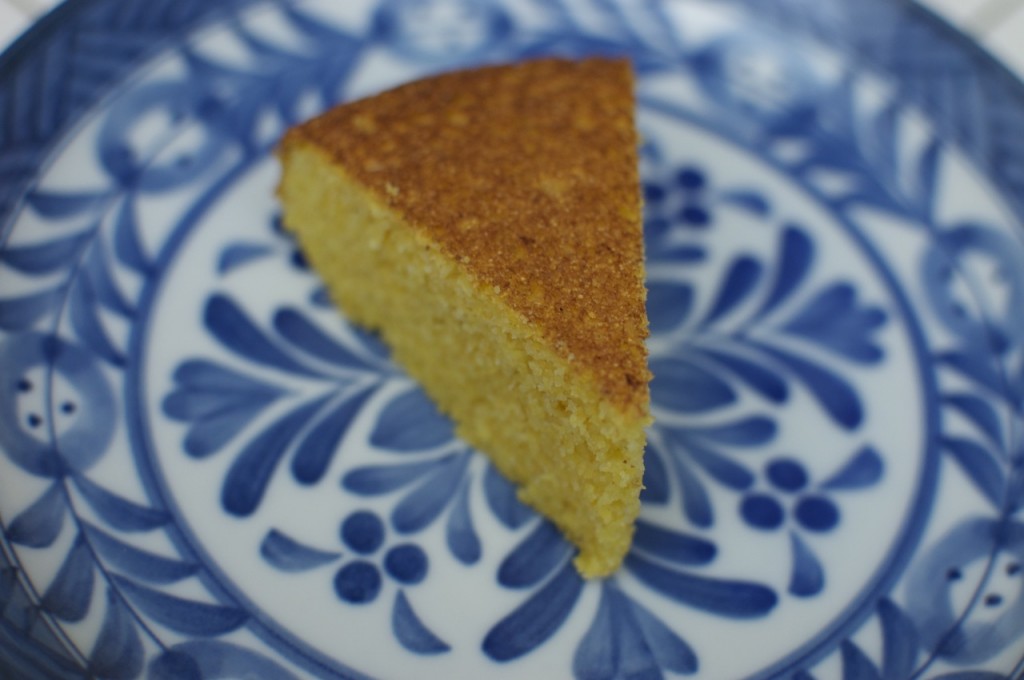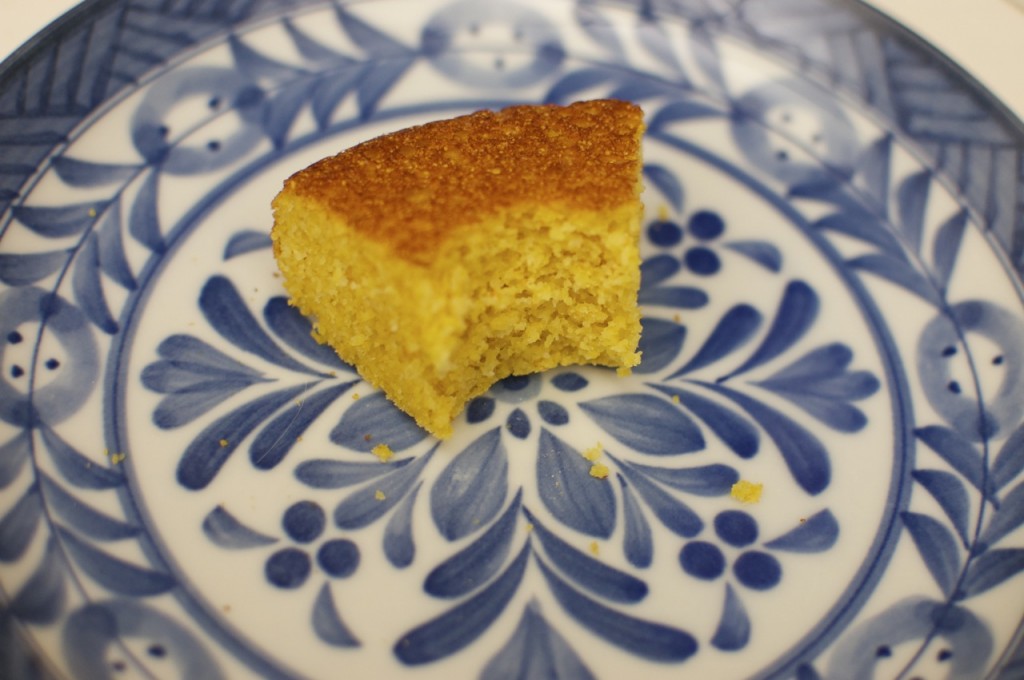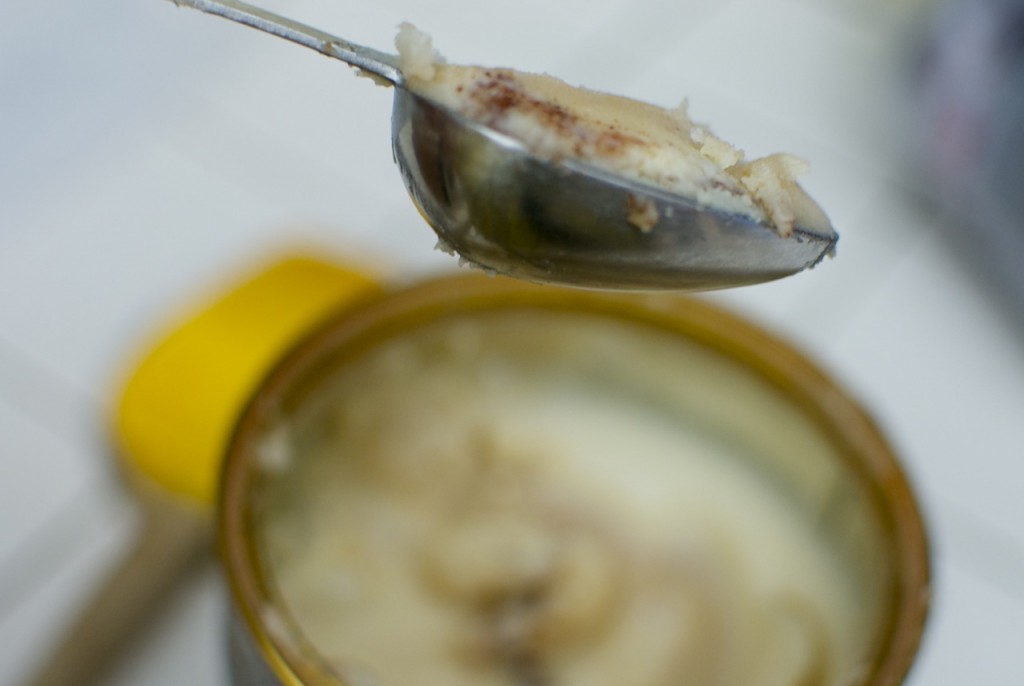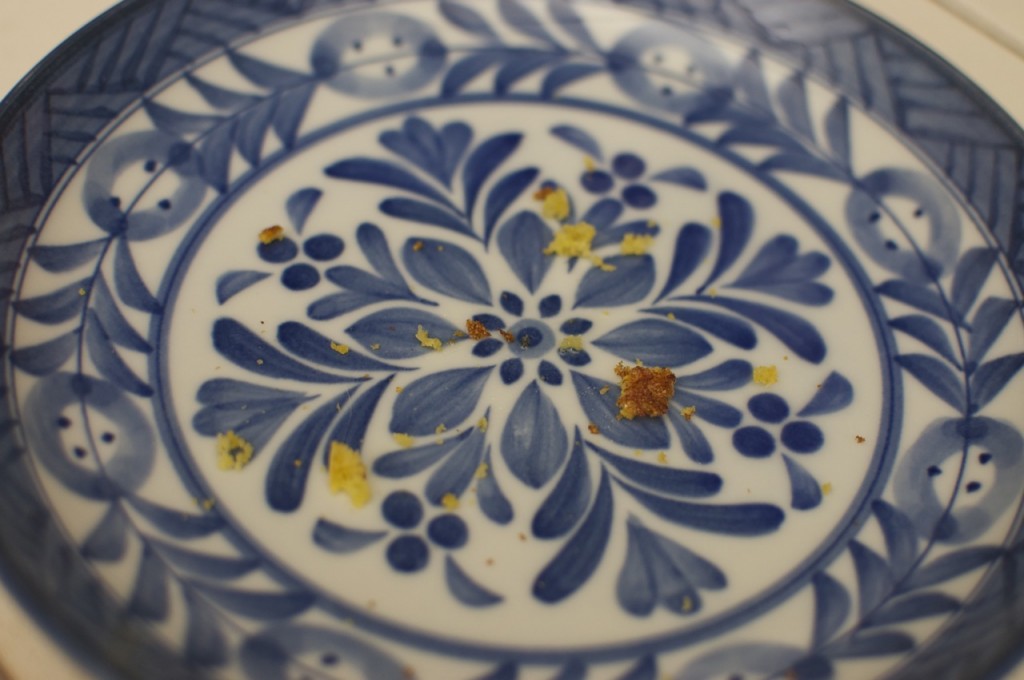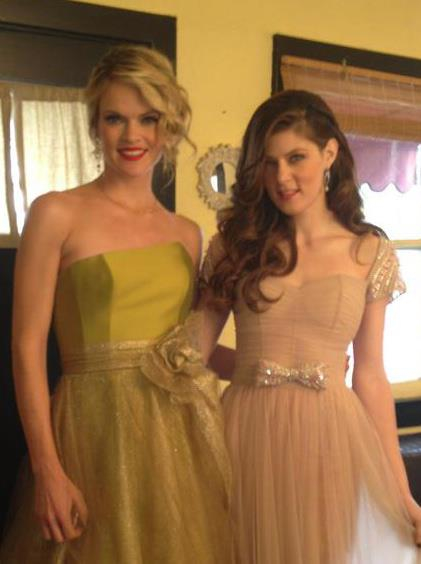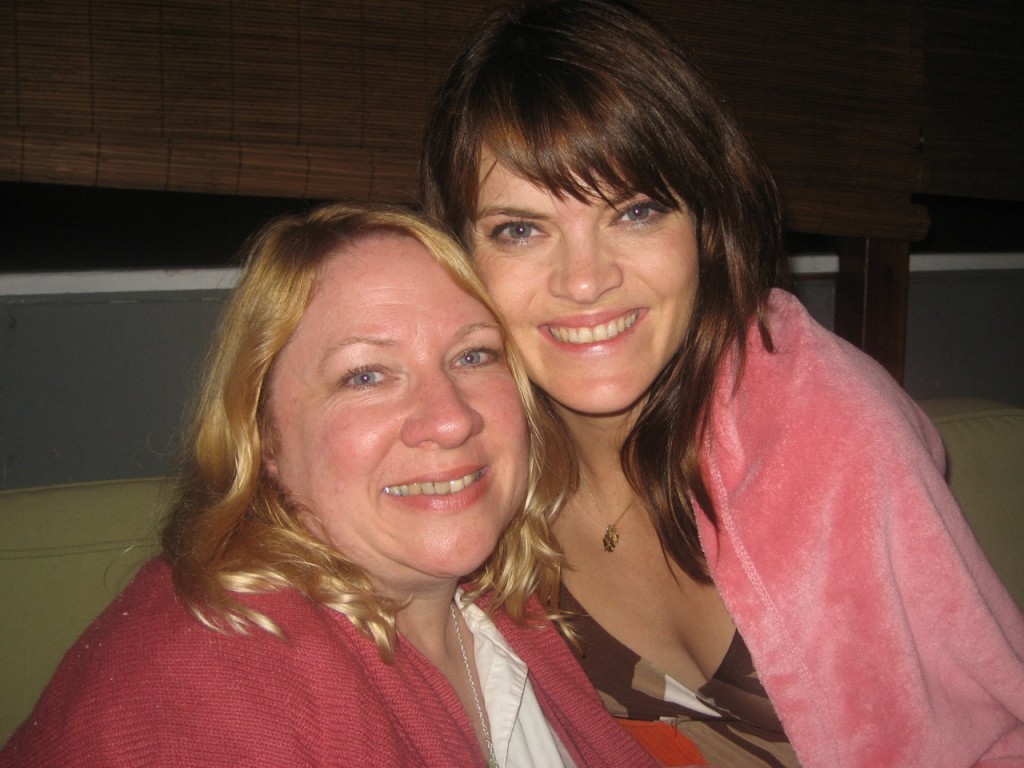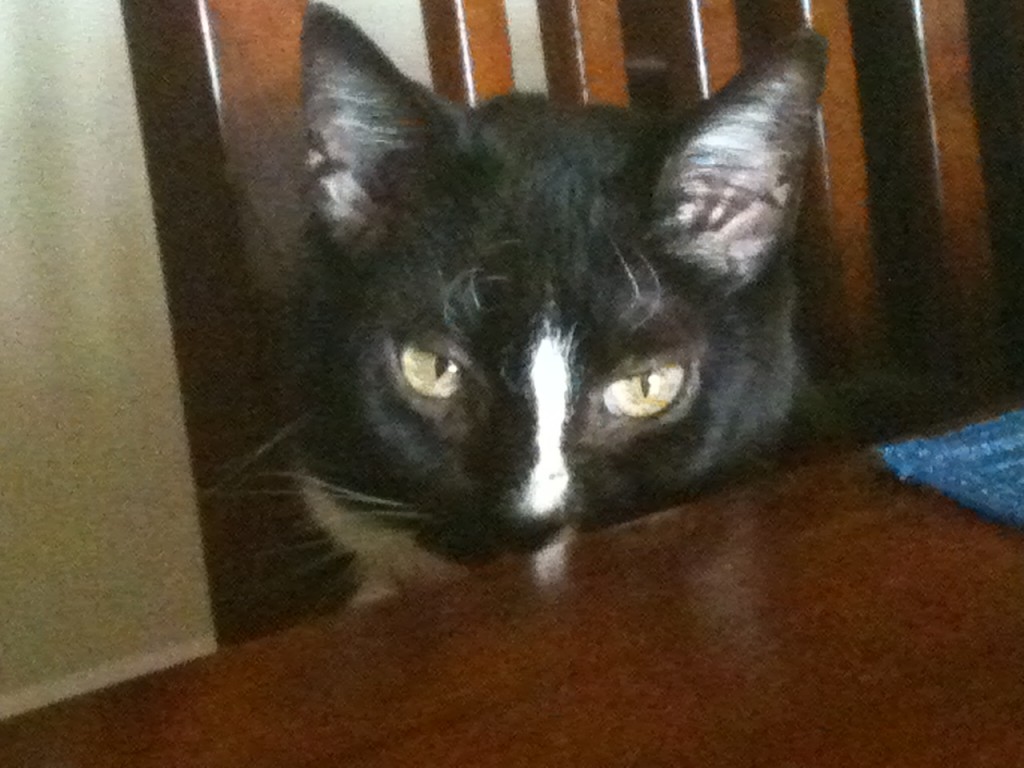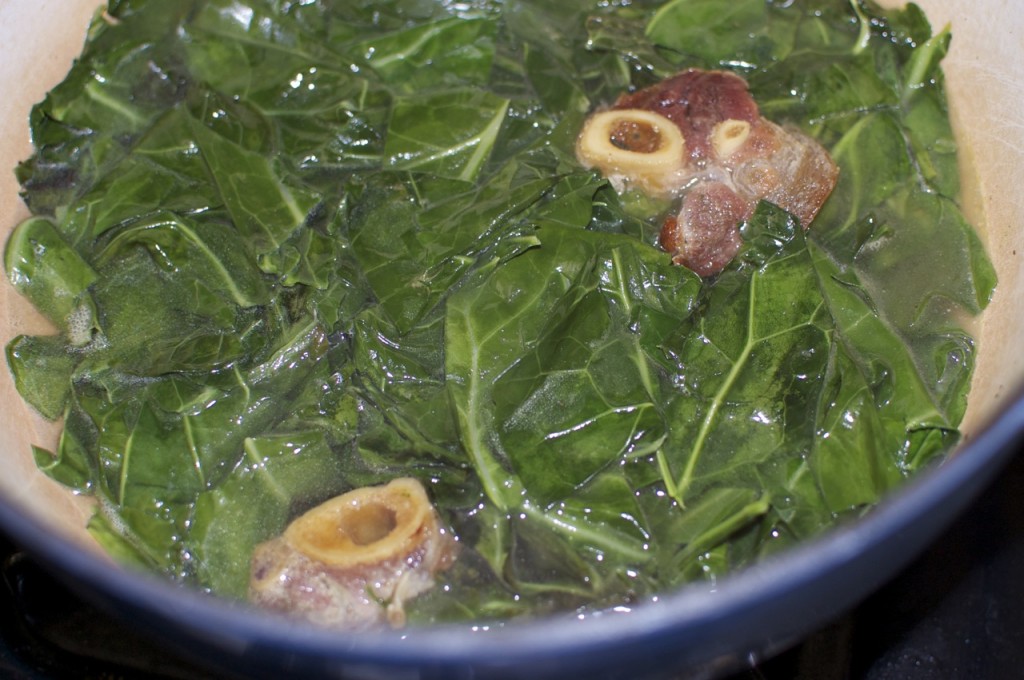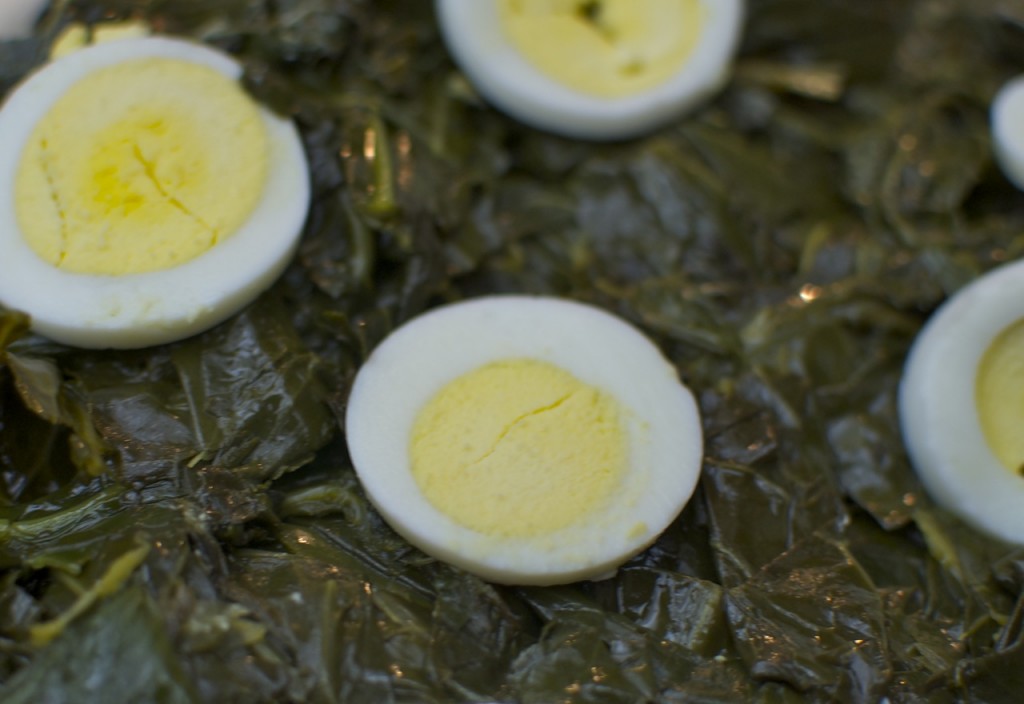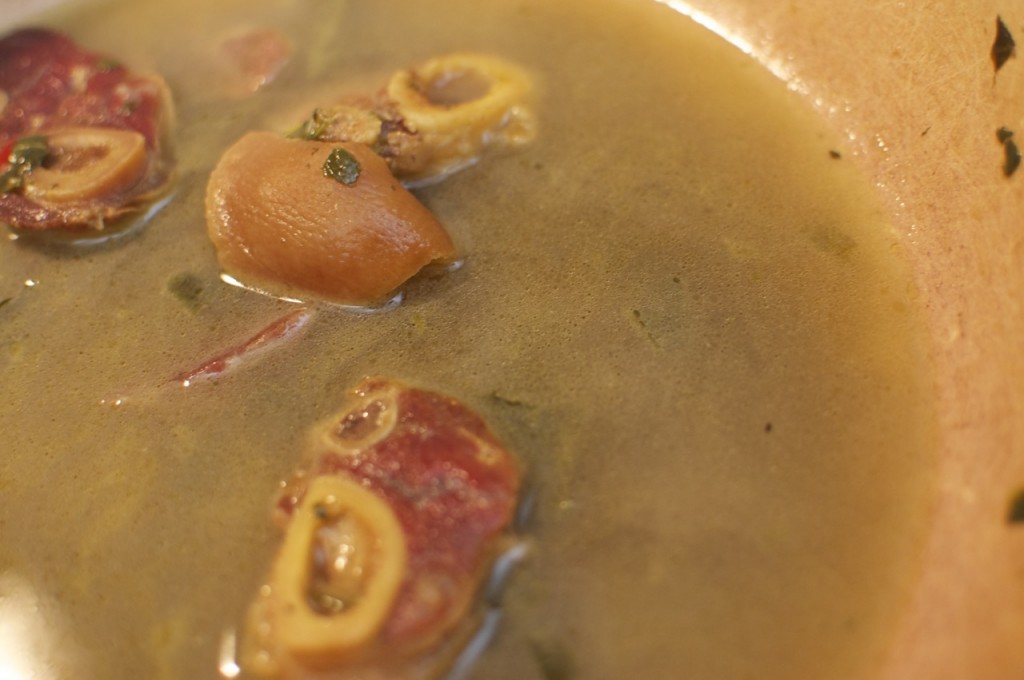Most of us associate eggs with just two things: breakfast and baking.
That’s giving them remarkably short shrift, for the egg is one of the most basic and versatile items in the larder. Just about any chef will tell you that the most challenging of all foods to cook is the egg. Sure, anyone can cook an egg, but I’m referring to how well it is cooked, not to its simply having been rendered non-raw.
Legend has it that the pleats in a chef’s toque represent all the ways in which that chef is able to cook an egg. Auguste Escoffier enumerated 256 in Le Guide Culinaire. Crack open Larousse Gastronomique and you’ll find more than 400 dishes involving eggs. This just boggles my mind.
I recently read White Truffles in Winter, by N.M. Kelby, a novel I asked Himself to give me for Christmas. It’s a sensuous and intriguing glimpse into the life of Escoffier, the man who, whether or not we give him the credit, taught us how to eat. It is fictionalized, for sure, but based on research. In it is a touching scene in which his ailing wife talks the servant through the steps needed to make eggs for the family’s dinner. This is done behind the back of the aging chef, who has forbidden anyone but himself to cook eggs in his house, so particular is he about their treatment.
So I tried the method outlined in the novel one night while Himself was out and I was home alone, already in my jammies. Rather than recount the scene from the book, I’ll just tell you how I did it. This method is what Escoffier referred to as frying, although to me it seems more en cocotte, but without the bain-marie:
I melted a couple of tablespoons of unsalted butter in a small crock, then poured two eggs into it, taking care not to break the yolks. I salted and peppered it, spooned over a tablespoon of cream and grated some Gruyere over the top, although Parmesan would have been just fine. Then I popped it into an oven preheated to 350°F for about 15 minutes, enough time for the whites to just barely set.
The dish was predictably good, but more than that it was luxurious and utterly satisfying, much more so than if I’d simply eaten two cheese-topped fried eggs from a plate. Maybe they were better because the crock holds the heat longer than a plate can. Unless they’re hard boiled, cold eggs just don’t have much going for them. And of course, anything with butter, eggs, cheese and cream in it is going to be decadent. In the novel, cook tops the dish with shavings of fresh truffle after pulling it from the oven. Next time I can get my hands on a truffle I will certainly do that. I could try a drizzle of truffle oil, but while truffles themselves are delicately flavored, truffle-infused oil can be overpowering. Maybe I’ll try cooking it in a half-and-half combo of butter and truffle oil, or maybe just sprinkle on a bit of truffle salt and see how that works.
I mopped up every bit of butter and cream and softly set egg with slices from a loaf of crusty bread. And then I purred like a milk-sated kitten for the rest of the evening, cozied up on the sofa beneath a wool blanket and flanked by a couple of sleepy cats, and resumed my reading.
When Himself got home, I told him all about my egg discovery. He was intrigued, so I made it again for us both a few nights later when we were popping the cork on a bottle of champagne to celebrate milestones in our respective careers. Honestly, I think champagne is the best thing to drink with eggs. Well maybe not at breakfast time–no good could come of that! But considering that a classic presentation of eggs is with osetra caviar, toast points and champagne, I know I’m not the first person to believe this to be true.
There is something about the egg that is both familiar and exotic. It’s nice to be reminded of this every now and then and not take it for granted. I think I’m going to not take it for granted for dinner tonight.
I think I’ll call this dish Eggs-coffier.

